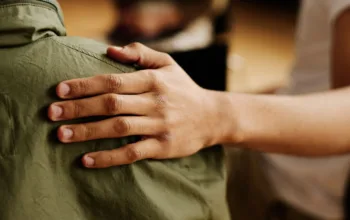I had things to say, and a voice to wield, and what I needed to say needed different clothes that in turn had a statement to make.
For British Somalis especially, the weeks leading up to a big wedding rival the anticipation felt for the Met Gala. Once you have secured your embossed cream-colored invitation to an event, the planning and video chats with girlfriends begin, and it is game on.
You would think it was everyone in Leicester’s wedding day, the way mere guests go about dissecting the night’s details. Who will be doing our henna, and does she do nails, too? Does that girl you went to school with still do makeup? And let’s not forget the most important question: What are you wearing? This last question is one that sits at the forefront of our minds for weeks, but in typical Somali fashion, it is only ever addressed in the last 48 hours before the big night itself. Young or old, that question is almost as sacred to us as the wedding itself. We approach it with a mantra that our people have carried with them for generations: You must show up and show out. You must.
And when Leicesterians want to show up and show out — more specifically, when Leicesterians want to flex and are on a budget — we don’t go to River Island or Zara. We go to St. Matthews, the cornerstone of culture in our city. A relatively small neighborhood near the city’s center, it provides home and sanctuary to much of Leicester’s Black and Asian community, who make up an estimated 47 percent of the area’s population. With its diverse makeup, St. Matthews is at odds with much of the city, its streets filled with more masjids and barbershops than one can count. It is where most Muslim parents drive their kids to Madrasah in the evenings or where you go to get the freshest halwa for Eid day. Though an exceptionally working-class area of Leicester, it has a cultural currency that is undeniable. It is also where you come to find the drippiest traditional ’fits when you have a big wedding to attend, like I did last September.
The cultural climate I grew up in was one where, at best, the Muslim experience was ignored and shunned by the mainstream. At worst, it was weaponized in a boogeyman narrative. Born a month before 9/11, I am a baby of the “war on terror” era and have never known a world in which I have not contended with people’s assumptions. It seems that instead of fading, the harmful stereotypes that have been stamped onto my people are more visible now than ever. It feels like political Islamophobia has become the easiest ticket into positions of power, with politicians needing simply to pander to fear in order to garner votes.
The consequences of mainstream Islamophobia have often manifested in unjust legislation, like the banning of burqas in places like France, Belgium, and China. But more times than not, it is an invisible weight on the everyday life of Muslims. It is a burden that dampens your joy, and I shrank into myself and lived without the vigor that I deserved until finally, enough was enough.
So, last September, in the same year that Muslims were victims of religious hate crimes 2,703 times in the UK, I put my all into celebrating the very marker of my difference at my first cousin Farhiya’s wedding: my hijab.
I went to the Somali corner shops in St. Matthews after work with my mum as I have since I was a child, geared with snacks and fizzy drinks. It was a tradition that we have kept even now in my 20s, meeting up after work before we walk home together. As was to be expected, the place was packed. Some women sat on the floor or on boxes containing freshly shipped clothes. One of the owners passed around shushumow and offered biscuits to the children in tow. A point is made about hospitality in Somali shops, especially on days like this. The vibrance of the garments and loud prints that line the walls may overwhelm outsiders who do not understand our trends, but to me, they bring the same comfort that my home brings. In fact, there are pieces in this shop that I recognize from my own closet, like an abaya with its sleeves lined with pearls.
In my periphery, something caught my eye: a display of hijabs bundled into rolls, organized by material, color and design.
At the top lay the hijab that would, unbeknownst to me, reignite my lost love for fashion.
Growing up, I had been obsessed with my mother’s closet. The wild prints and breathtaking textures had riled me into experimenting. But as I got older, I started to fall into the trap of dressing as far from my origins as possible in the hopes of assimilating better. Off came the zebra-print dress and on went a black pencil skirt that I wore because Sarah in my tutoring class had one. The multicolor hijab that my mother had gifted me for my 14th birthday was switched out for the generic slicked-back bun that the girls on the school netball team sported at a party earlier in the week.
I started to spend more of my summers back home in Somalia among the rest of my family, and I was struck by just how well everyone dressed. That combined with my political awakening meant that I started to reconnect with my roots through clothes.
The extroversion that I had hidden away as I battled against assumptions from others and myself about what a hijab should look like started to unravel when I turned 18. I had unlocked a newer version of myself — and I found that I gravitated toward different clothes, ones with personality and flair. I had things to say and a voice to wield, and what I needed to say needed different clothes that, in turn, had a statement to make. And right at that moment, a purple sparkly hijab from that bundle called to me. It seems silly to say, but it felt fated. It was flamboyant and loud, and it made me feel giddy. The $4 price tag was a small cost to pay for the rarity of partaking in all that is vain and pretty.
There is a somberness expected in your dress as a hijab-wearer. But the Somali shop has helped combat all of that limiting nonsense. To those who fled their homes so long ago, they have become a sort of fashion holy ground, cultivating a flashier, more extroverted (and African) take on modest dressing.
Trends laid down by fabric owners in countries like Dubai and Turkey can help alter the way an entire community dresses. These small-business owners do everything themselves, from sourcing the fabric in bulk to negotiating with tailors to help them realize their vision for the fit. The lack of a middleman ensures that, for the most part, prices stay down. There is no one to interfere in the trade of these production workers; they are their own bosses and so negotiate their prices with each store owner on their own terms. That in combination with the fact that there is no cute merchandising or packaging to pay for also helps to make the Somali shop a cheaper option than your usual high-street stores.
When the civil war of the 1980s erupted in Somalia, many of her people fled abroad, making up the far-reaching diaspora that we see today. Leaving behind their hopes and aspirations, many needed to find ways to make money and so they did what many immigrant populations have done before: They hustled. When it became apparent that the war was not ending anytime soon, they decided to put down roots, a level of permanence for their children, while also connecting their community to the culture they were forced to leave behind. We needed our wooden Afro combs, organic sesame oil, tuna straight from our shores, and even sparkly scarves.
Whatever we needed, we provided for ourselves. There are few things more powerful than expanding when the status quo would have you shrink, few things more beautiful than seeing someone live their life on their own terms, no matter how inconvenient that is to the systems that exist to oppress us. For me, it took that hijab to help unlearn the falsehoods I had internalized about how a Muslim, Black woman should operate.
I paid $4 to help better understand myself, to legitimize my version of femininity. I stood in that shop and wrapped that scarf around me to “oohs” and “aahs.” My mother and I were the hijabis of the wedding, clad in the same tailored dress but she in jade. Besides the scarf itself, the most stunning thing about that purchase was the immeasurable confidence that it sparked in me. On that night, I perceived myself to be beautiful and dynamic. Seen. To the many thousands of Somali small business owners, I thank you. I paid someone $4 to help me better understand myself. I would do it again in a heartbeat.
Ayan Artan is a culture and politics writer whose work focuses on engaging critically with intersectional viewpoints, exploring topics such as race, feminine identity, and the migrant experience through an original lens.
Author: Ayan Artan
Read More



